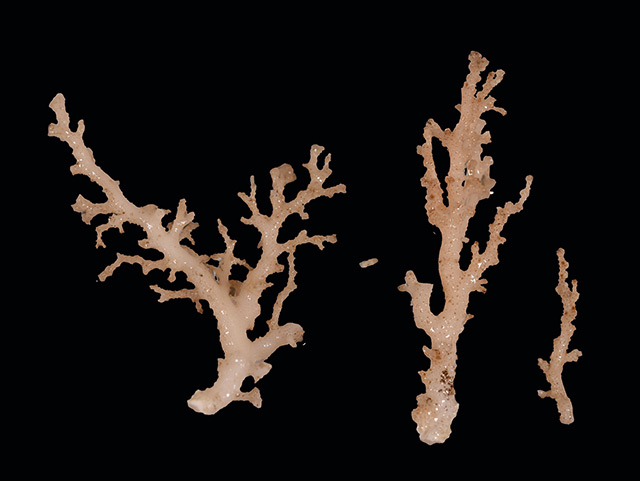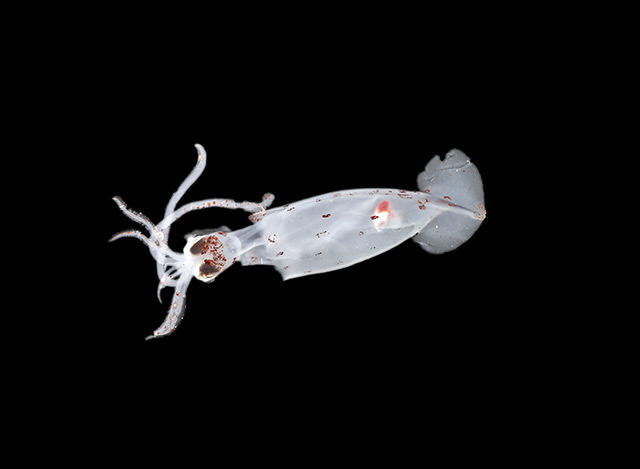The three-week voyage on NIWA’s research vessel Tangaroa was the first flagship Southern Hemisphere expedition for Ocean Census, a global alliance to accelerate the discovery and protection of life in the ocean founded by The Nippon Foundation and UK ocean exploration foundation Nekton.

The Bounty Trough – 800 km long and up to 4800 m deep
The team of scientists from NIWA and Te Papa in New Zealand collaborated with experts from the UK and Australia to collect almost 1800 samples from as deep as 4800 metres underwater along the 800-kilometre-long Bounty Trough.
Ocean Census Science Director Professor Alex Rogers, who co-led the expedition, says he’s been impressed with the sheer biodiversity of life they’ve discovered.
“It looks like we have a great haul of new, undiscovered species. By the time all our specimens are examined, we will be north of 100 new species. But what’s really surprised me here is the fact this extends to animals like fish – we think we’ve got three new species of fish.”
Voyage co-leader NIWA marine biologist Sadie Mills says the expedition has shown the Bounty Trough is flourishing with life.
“We’ve gone to lots of different habitats and discovered a whole range of new species, from fish to snails, to corals and sea cucumbers – really interesting species that are going to be new to science.

“Ocean Census has enabled us to explore an area of Aotearoa’s deep seafloor that we previously knew little about in terms of the animals that live there.
“This partnership will not only add new species to our recently published New Zealand marine biodiversity inventory, but will improve our understanding of the seafloor habitats and living geographic and depth ranges of rare species.”
More than 100 new species of marine life
A global team of scientists is working to confirm the finds at taxonomic workshops at NIWA and Museum of New Zealand Te Papa Tongarewa. Over the next three weeks they are sorting and describing the specimens collected, so they can be added to the picture of Aotearoa New Zealand’s marine biodiversity.
New species identified so far include dozens of molluscs, three fish, a shrimp, a cephalopod and a new genera of coral. One find is baffling the experts.

Queensland Museum Network Taxonomist Dr Michela Mitchell says the voyage team initially thought it might be a seastar, a sea-anemone or zoanthid-like creature, but it has so far proven to be none of those.
“We’ve got a lot of experts here having a look who are very excited.
“We now think it could be a new species of octocoral, but also a new genus [wider grouping of species]. Even more excitingly, it could be a whole new group outside of the octocoral. If it is, that is a significant find for the deep sea and gives us a much clearer picture of the planet’s unique biodiversity,” she says.
Prof. Alex Rogers says the Ocean Census NIWA Bounty Trough Expedition has met the ambition of a fully collaborative research mission aimed at discovery of new species in the ocean.
“The partnership with professional scientists from NIWA and Te Papa and the ship’s crew from the RV Tangaroa has led to a transformative change in our understanding of this remote part of the ocean and the species that live within it, leaving a fantastic legacy for the people of New Zealand.”
Andrew Stewart, Curator Fishes, Te Papa, reflected on the exciting expedition and the vastness of the area explored. “It was a privilege to collaborate with NIWA and Ocean Census. While our findings are significant, we know that we’ve barely scratched the surface of the Bounty Trough – there’s a whole other world of fauna still waiting to be discovered.”

Dr Thom Linley, Curator of Fishes, Te Papa, is still buzzing from the expedition. “Despite being groups of experts, each team found something unexpected and exciting that they couldn’t wait to share.”
Find out more about the expedition at oceancensus.org
The specimens collected will be housed in the NIWA Invertebrate Collection and National Museum of New Zealand Te Papa Tongarewa in their Mollusca and Fish Collections. The knowledge gained from the expedition will be included in future editions of the New Zealand Marine Biota NIWA Biodiversity Memoir, which was recently published by NIWA and represents our knowledge of biodiversity in Aotearoa New Zealand to date, currently comprised of 18,494 known living species.













